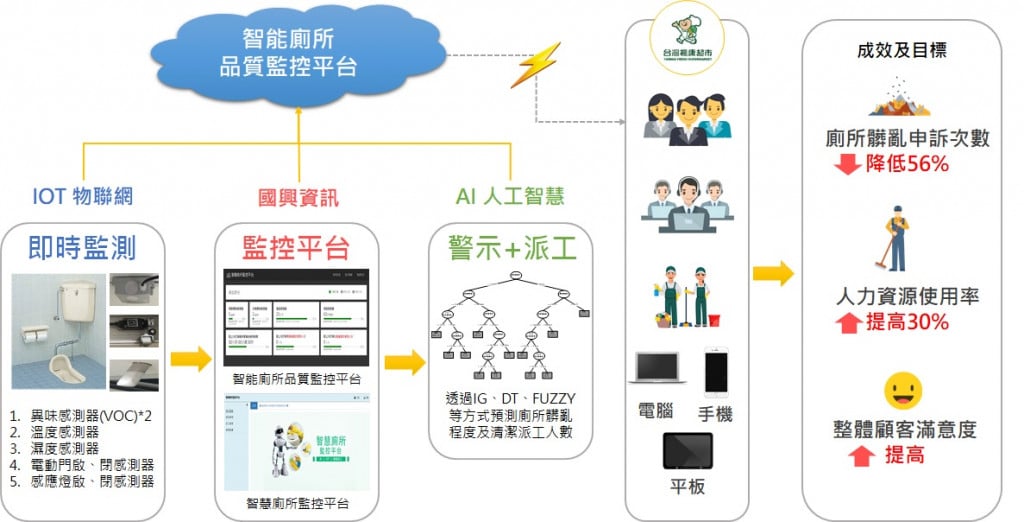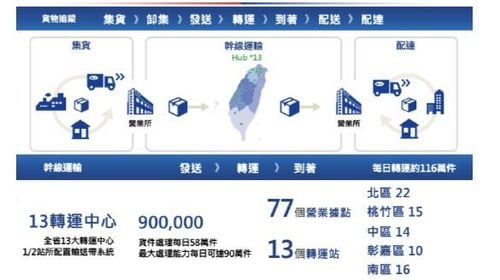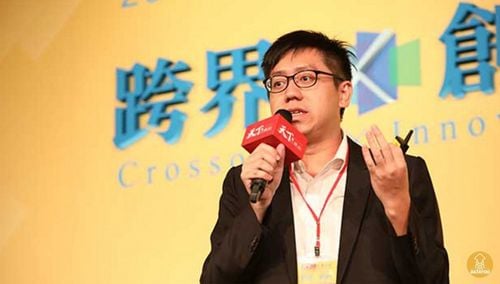【2020 Application Example】 AI Smart Toilet Quality Monitoring Platform, reducing customer complaints about dirty toilets and enhancing staff scheduling effectiveness
Best practices in AI+IoT implementation
As our country enters the first year of 5G commercialization this year, the integration of the Internet of Things with artificial intelligence to transmit data with zero delay will enable everyone to effectively manage all data. Toilet 'odor monitoring' has become the best platform. A certain chain supermarket in the country has 47 stores nationwide and in recent years, as competition in the supermarket industry intensifies, some stores plan seating areas and toilets for customer use.
Currently, the average number of customer complaints about toilet cleanliness in a certain store of the chain supermarket is about 10 times per month, which is notably higher than other stores, thus they hope to solve the problem of high complaint rates through artificial intelligence.
Customers frequently complain about dirty toilets
The toilets of a certain store of the chain supermarket are inspected at 12 PM and 6 PM daily, and cleaned during the night shift. Customer service staff often receive complaints about the dirty and smelly toilet environment, causing the need to constantly deploy manpower for toilet maintenance. To achieve a 100% odor-free toilet, it would be necessary to employ a cleaning staff member permanently present in the toilet, however, this solution is too costly and wastes manpower.
Through a collaboration between Guo Xing Information Co., Ltd. and the chain supermarket, the National Taichung University of Science and Technology AI team was commissioned to address this vexing issue using IoT and AI technologies.
IoT Monitoring x AI Manpower Dispatch
Guo Xing Information equipped the toilet door locks with IoT sensory devices, and installed 'odor sensors' and 'air temperature and humidity sensors' outside the cubicles. By monitoring the behavior, frequency, and timing of door usage, it predicts the cleanliness of the cubicle. If a person opens the toilet door and closes it quickly, and if more than three consecutive people exhibit the same behavior, it predicts that the cubicle is dirty enough to require cleaning.
In terms of manpower dispatch, the system predicts staffing needs based on user frequency, holidays, and festive events, dynamically adjusts manpower reserves, and calculates the minimum staffing needed to maintain toilet comfort.

▲Service architecture of the Smart Toilet Quality Monitoring Platform
This 'Smart Toilet Quality Monitoring Platform' is installed in the open-area toilets of business premises, collecting data such as usage frequency, time, odor intensity, air temperature, and humidity, and transmitting it to the platform for AI data analysis. This enables management to understand the real-time usage, frequency, and dirtiness of the toilets, providing alerts to dispatch cleaning staff and take responsive actions. It also assists managers in environmental quality monitoring and dirty conditions predictive dispatching. Through historical data analysis, it suggests dynamic manpower deployment during different time intervals for effective human resource management and utilization.
Smart toilet detection, reducing cleaning labor costs
After field tests of the Enhanced AI Smart Toilet Monitoring Platform, the retailer found the real-time monitoring and alert features extremely practical and is willing to continue using them. Regarding 'reducing the number of complaints', a one-month data validation showed a significant effect, while 'dynamic manpower dispatch' is still under evaluation and validation.
After a month of data evaluation, a noticeable improvement was found in 'monitoring toilet usage' and 'reducing complaints'. After trial use by the retailer, they are also willing to continue using the system. In the future, notifications will be made according to 'usage time' to prevent accidents within the cubicles. There will also be future deployments and promotions priced at low, mid, and high levels.
「Translated content is generated by ChatGPT and is for reference only. Translation date:2024-05-19」


